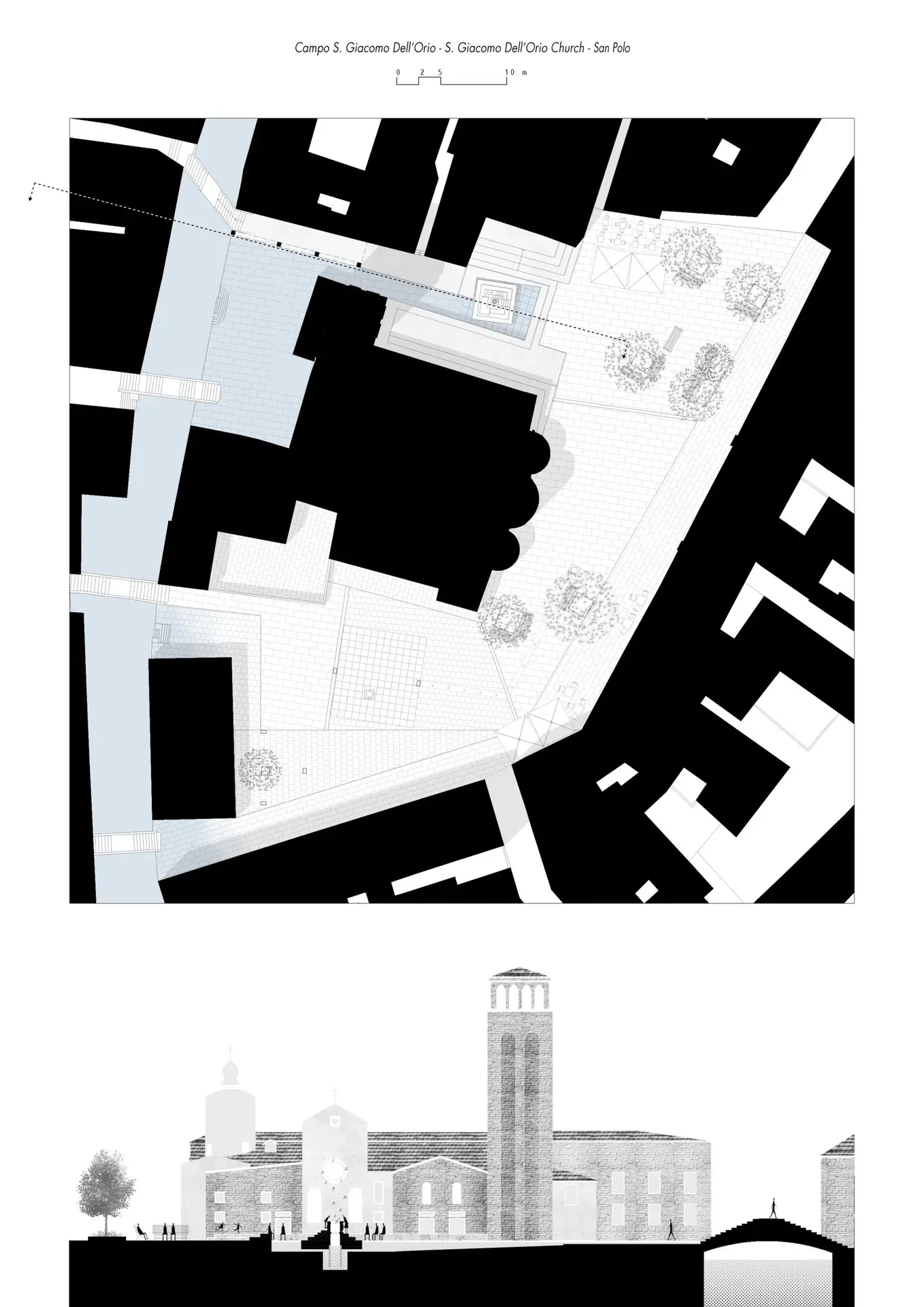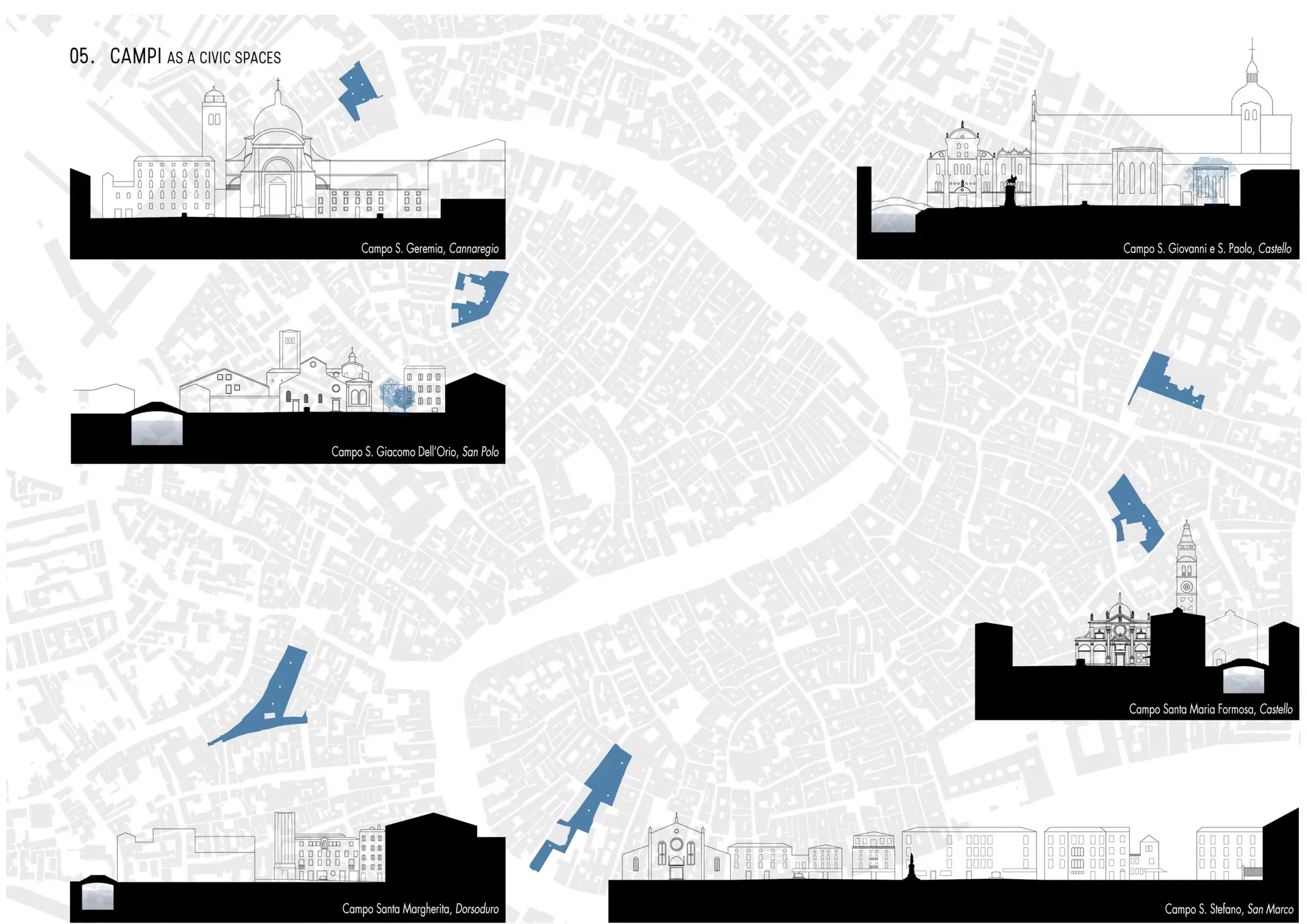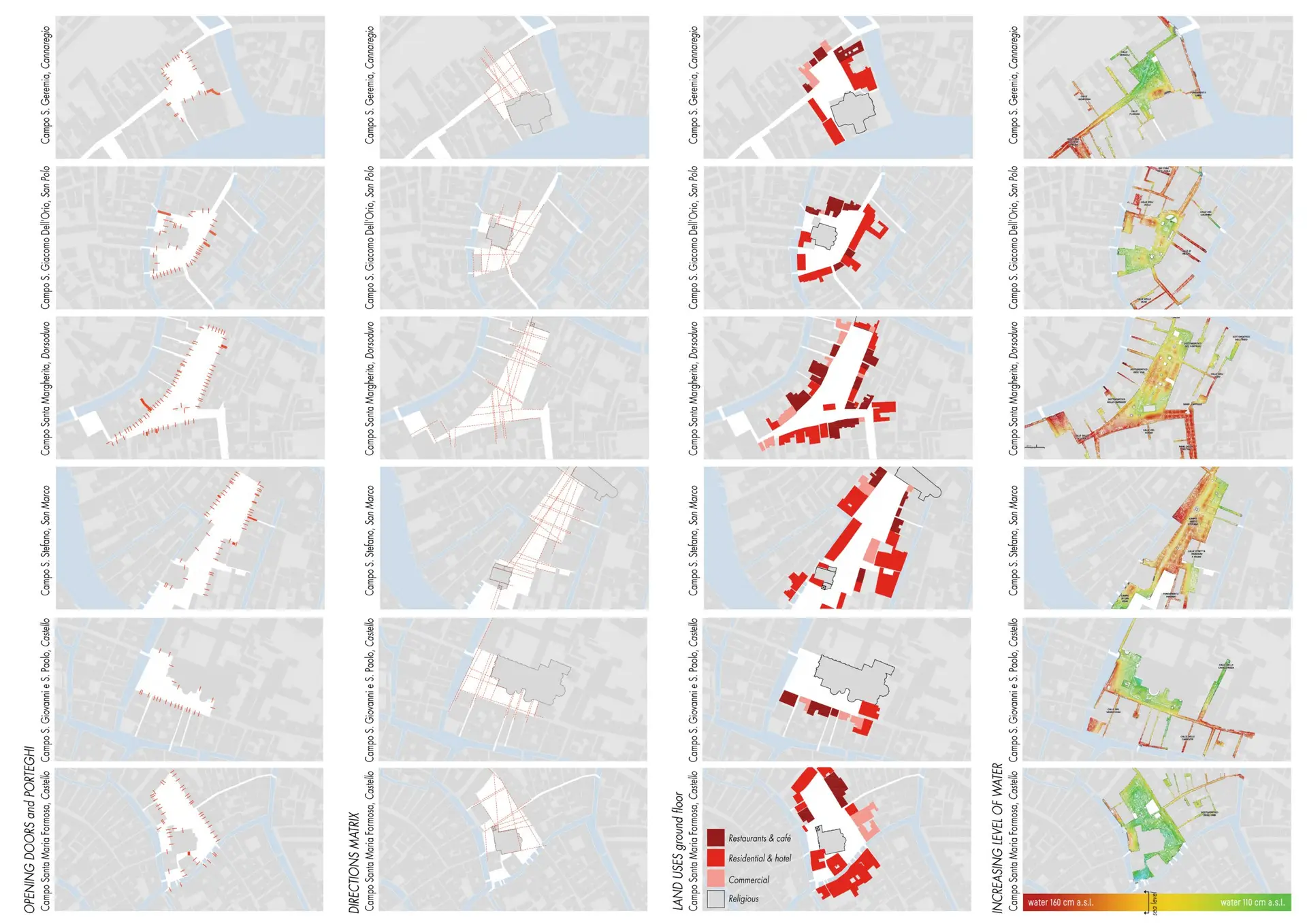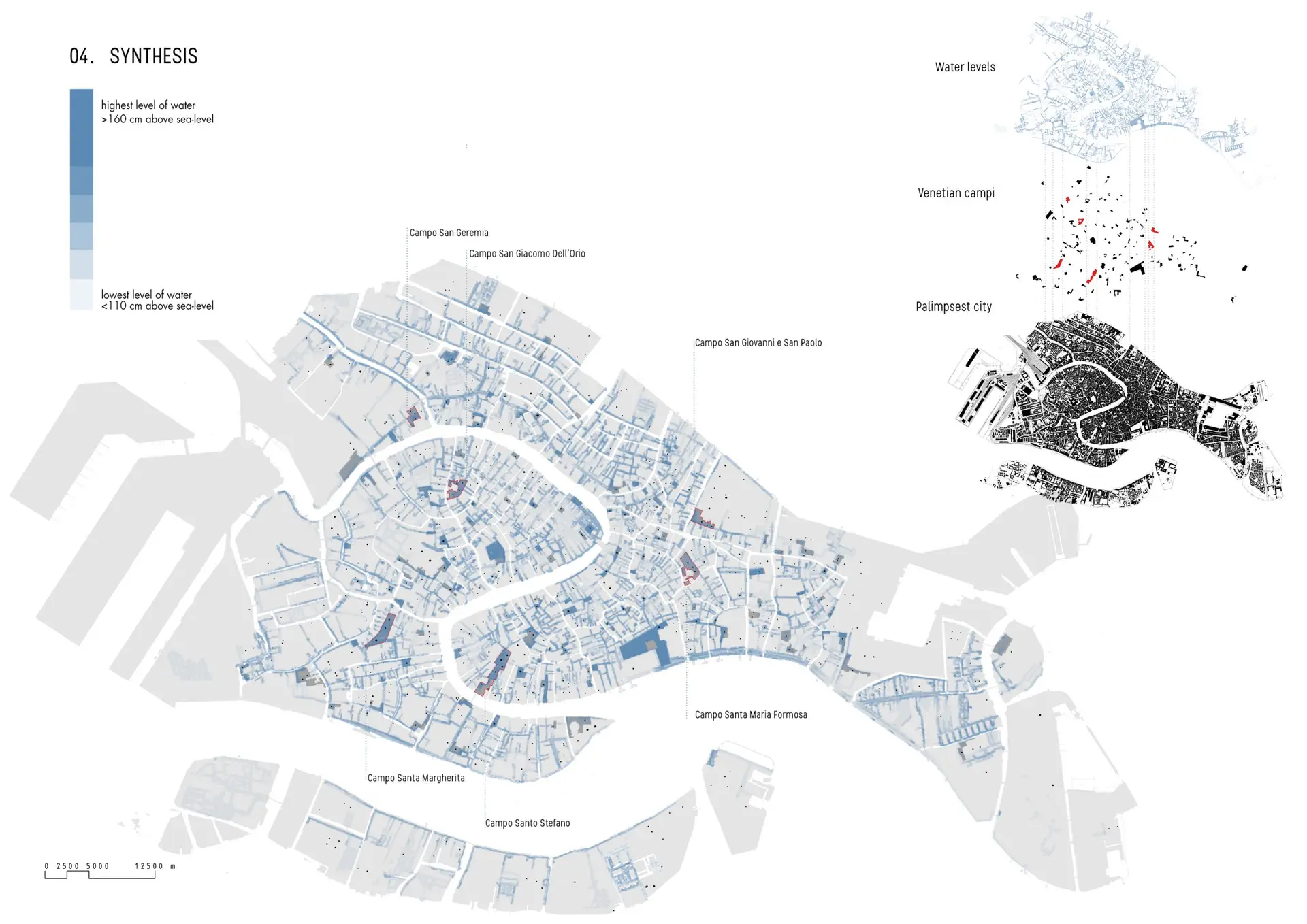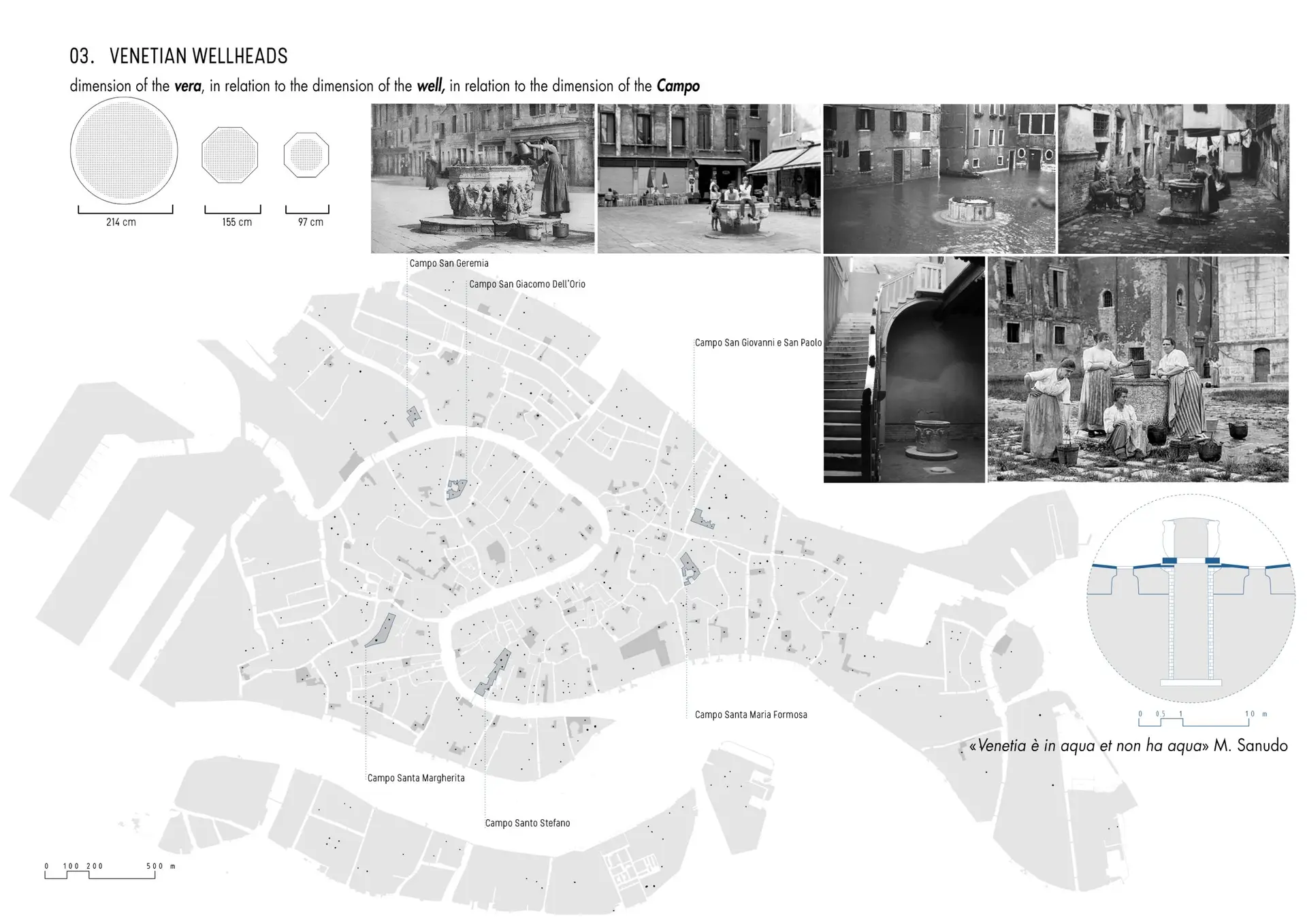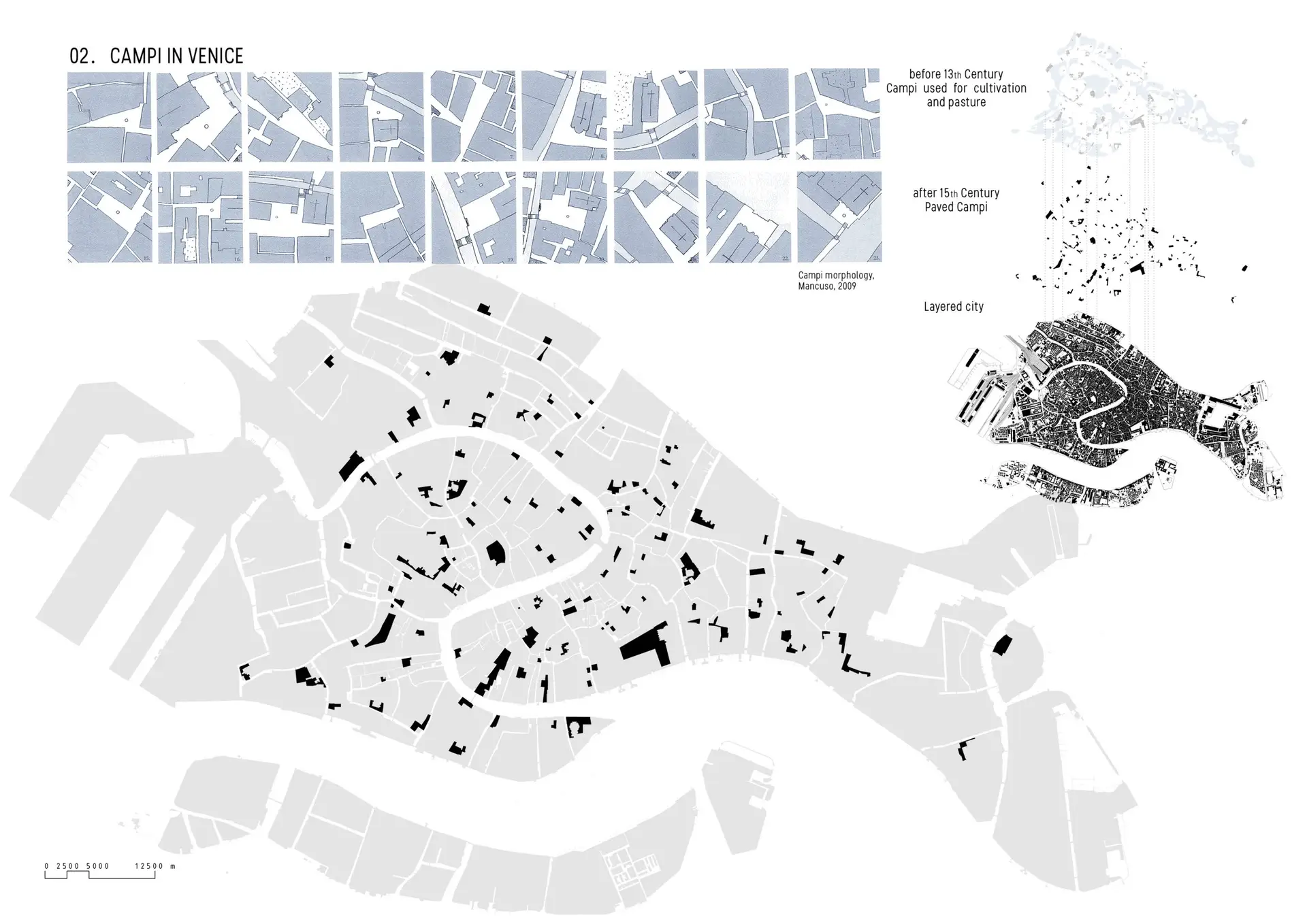This research project was developed during the E-Merging Design Research module (EDR) in the SDAC MSc at the Bartlett School of Architecture, UCL. It investigates collective meanings in Venice. The contributions provide a glimpse into a layered and complex urban system, accompanied by speculations about the potential for ‘acupuncture interventions’ and what forms those interventions might take.
Description
Venice is a centuries-old city that has endured and continues to bear witness to an ongoing process of transformation. It is evolving while respecting its past. Venice is a layered city, where collective meanings are deeply rooted in the relationship between historical traces and water.
Venice has a strong tradition of festivity, which influences both its architecture and urban design. In particular, the public spaces of the campi, which still play a vital role in society today, historically served as stages for public life and ceremonies open to all social classes. Each campo forms its own distinct urban interior, enclosed by the surrounding buildings, creating a deeply theatrical architectural arrangement—a stage for urban life that has always been at the heart of Venetian neighbourhoods. Initially unpaved, with a strong sense of Venetian identity clustered around a grassy space, the campi were paved between the 13th and 15th centuries and have remained so ever since. They hold significant historical, social, and economic value, having hosted markets, religious services in adjacent churches, and access to the city’s water supply.
Indeed, most campi feature a central wellhead, which historically served as a vital source of water through the filtration of rainwater, collected by shaping the paving with appropriate slopes. However, the gradual centralisation of city services has diminished the campi‘s function as hubs of social interaction. Today, they remain active parts of the city, representing a negotiation between tourists and Venetian inhabitants. Despite this, no meaningful effort has been made to address the impact of rising water levels.
Most campi are associated with a church, from which they often take their name, serving as the official spatial extension for Catholic ceremonies while also accommodating other religious communities. Venice has long been a crossroads of peoples and faiths, enriching its cultural heritage—a legacy still evident today. Armenians, Christians, Jews, Orthodox, Indians, and Arabs have all converged in this city, which has always been open to relationships with diverse cultures.
The project aims to establish the campi as civic spaces for local rituals and festivities, embracing what Carlo Scarpa called the “unsettling force of water” to celebrate a new spatial dimension—one that is no longer confined within religious buildings but unfolds in the public realm. The process begins with the identification of six campi as new shared spaces for community rituals, each directly related to the historical and social significance of its location. The design takes into account the evolving configuration of these spaces in response to rising water levels.
The concept is to create a “campo within a campo,” restoring the human scale and essence of their original meaning—an aspect increasingly overshadowed by the constant influx of tourists. These spaces would allow for varied uses, responding to both the presence and absence of water. Inspired by Carlo Scarpa’s approach, the project seeks to reinterpret the campi through his vision, retracing existing elements, experimenting with materials, and incorporating transitional spaces shaped by water’s influence.


